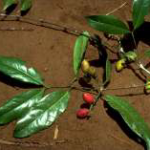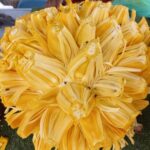When walking with Jahai Orang Asli people near the Royal Belum State Park in Perak, Malaysia, they showed me some of their plant food sources in the forests. One of them was young rattan palm shoots. For the Jahai people, it was not important which exact rattan species it was, but the young rattan shoots had to have thumb-thick stems.

Plant description
The stems of the rattan palm shoots develop from rhizomes underground. Therefore, often, more than one stem develops from such a rhizome. The stems are heavily thorned, and additionally, flagella develop from these stems and will grab with their thorns anybody not moving carefully around.
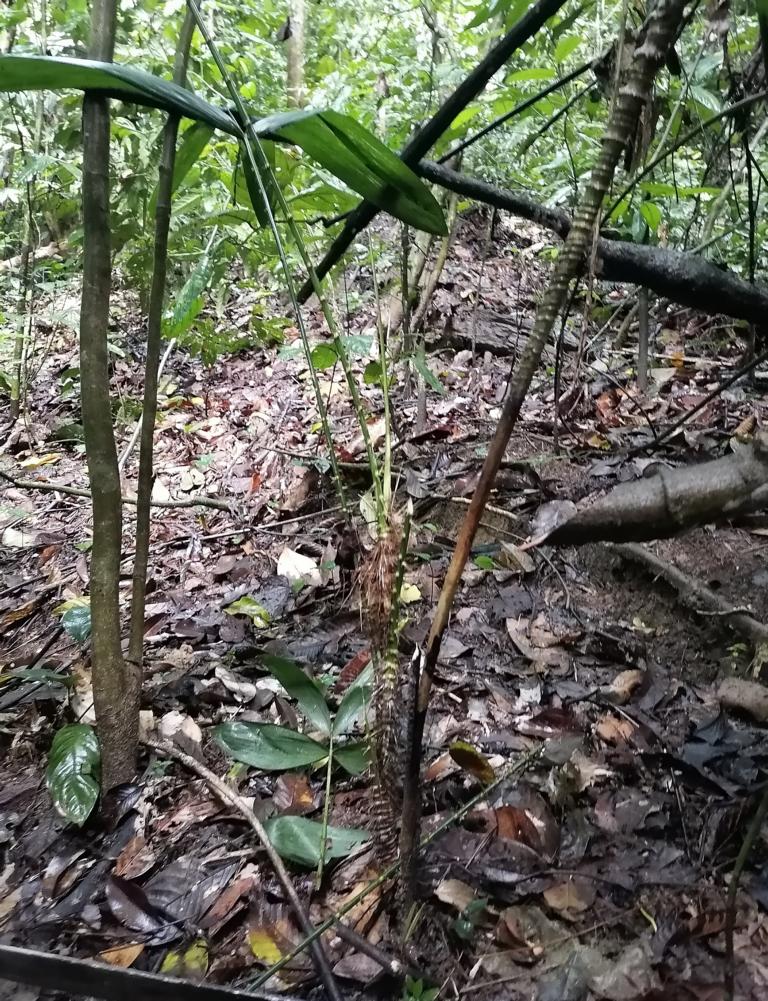
Tomlinson P.B. (2001) et al. describe the architecture of the stem axial bundles of Calamus rattan palms. In the following picture, such vascular bundles can be seen along the green stem of a shoot. This pattern on the stem is very conspicuous, even among the uniform greenish-brown color scheme of all the surrounding plants. Unfortunately, flagella – these whip-like structures – are not as easy to spot.
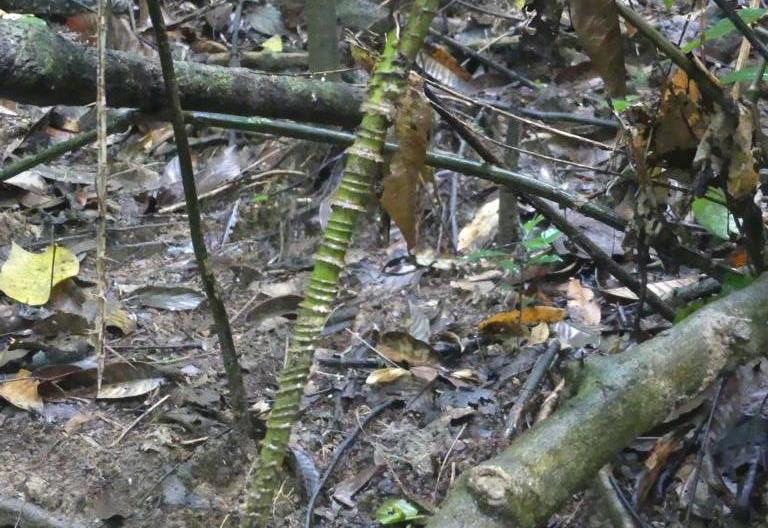
Harvesting the rattan palm hearts
After finding young rattan shoots of the required state and thickness in the forest, the surrounding flagella and other thorny appendages must be removed with a heavy cutting tool, such as a parang.
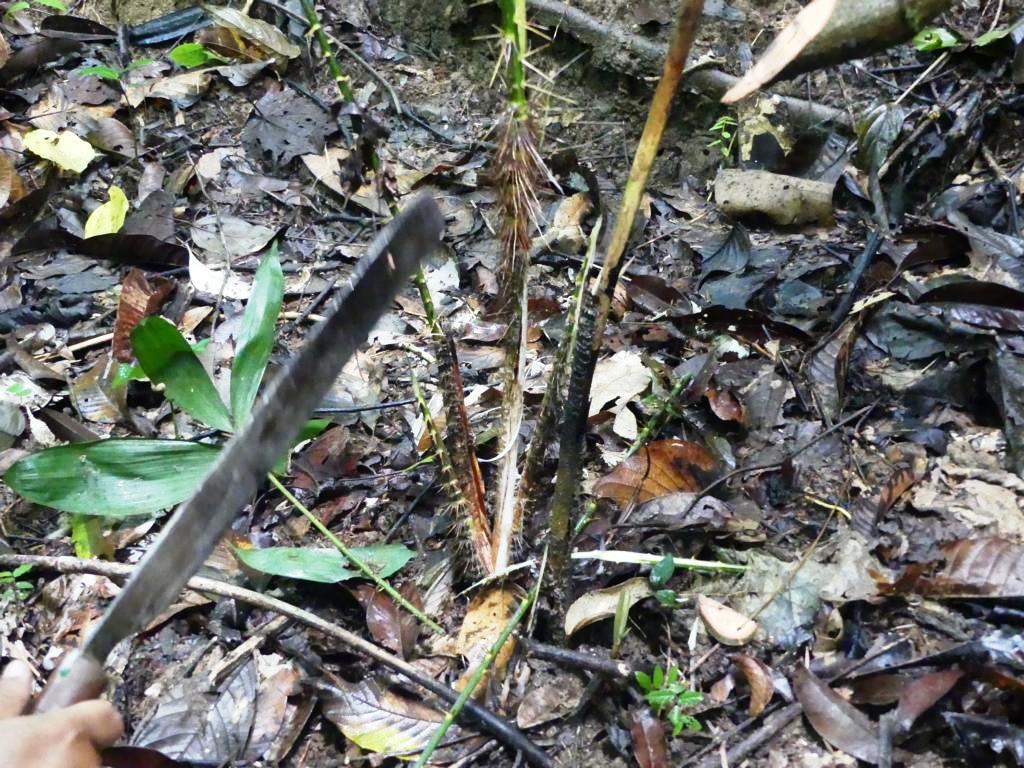
Thereafter, the palm heart (terminal bud) of the palm shoot will be freed from the surrounding thorny sheet and cut out.
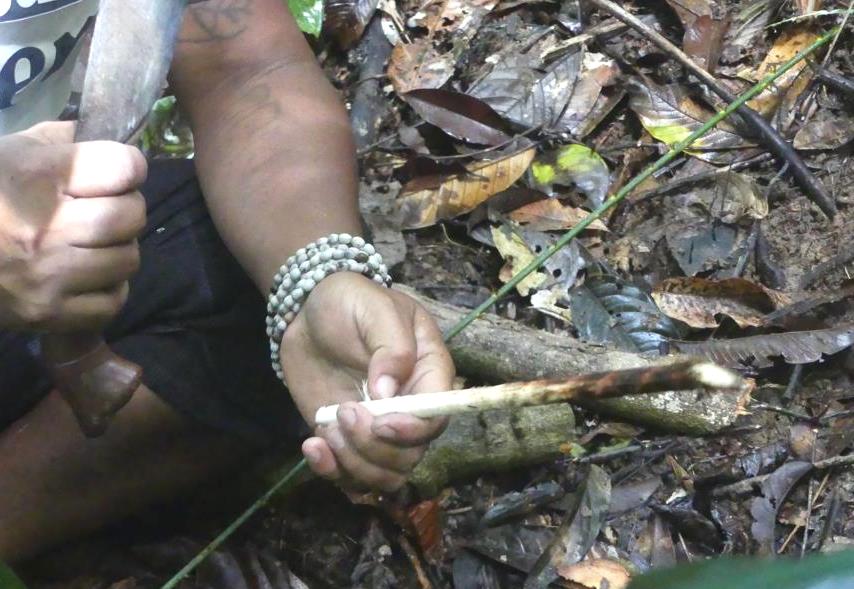
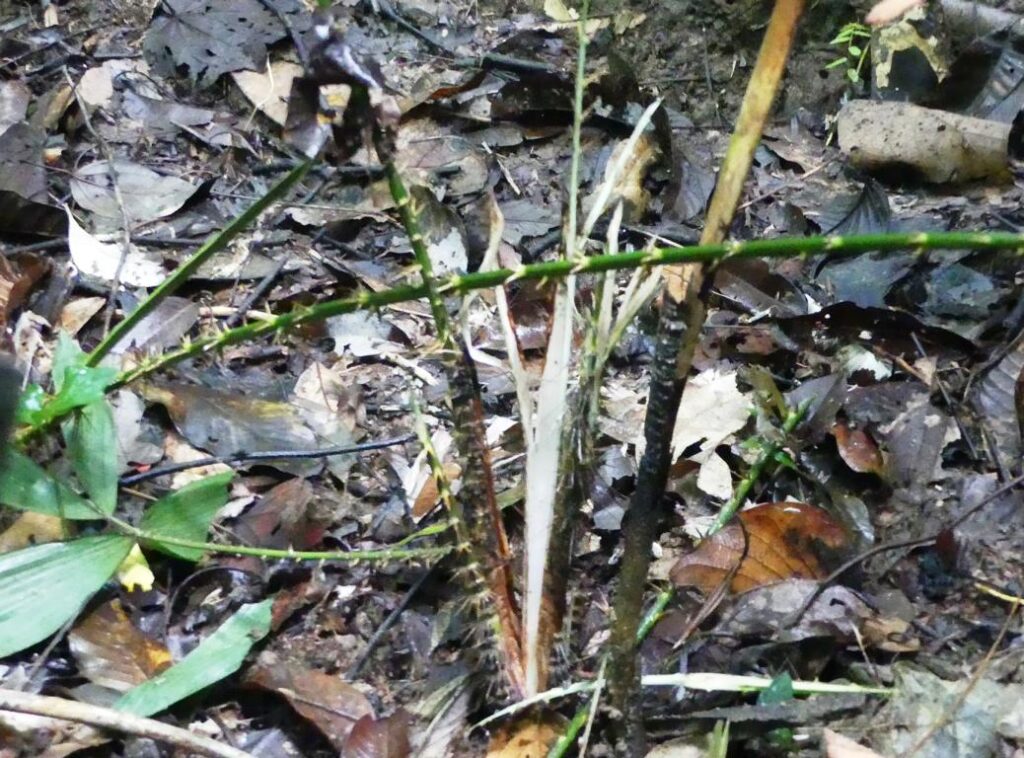
In case there are still woody or stringy sheets around the palm heart, they will be split and removed from the inner core. The texture of the palm heart is firm and watery, and the cell density appears to be uniform over its whole diameter.
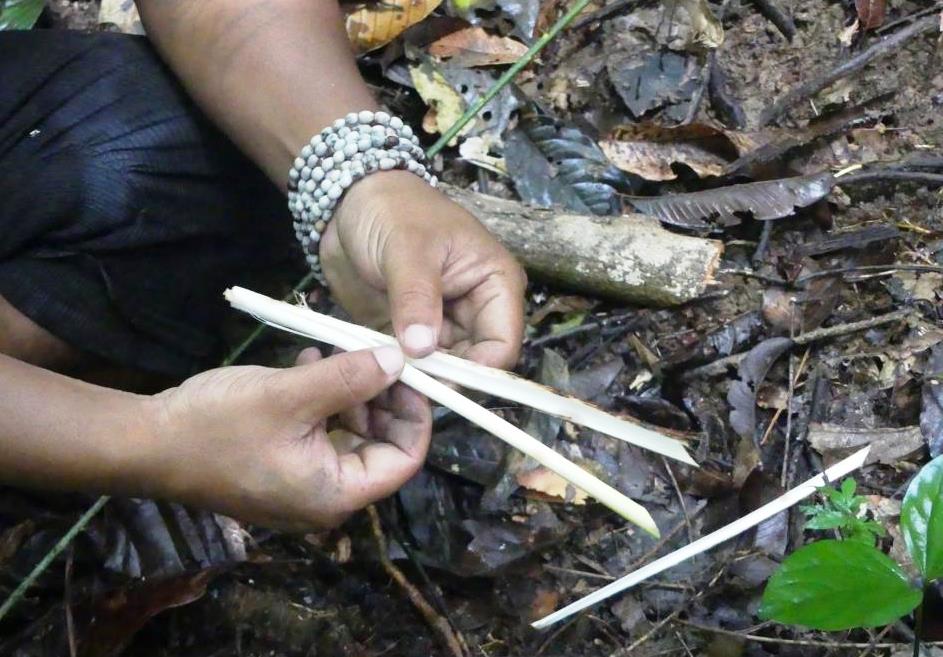
How to eat them?
Jahai people eat the palm heart raw, as it is. They just cut it out from the shoot, and eat it as snacks when walking in the forests. I tried the same, and can confirm that it tastes like palm hearts in salads of a Churrascaria in Brazil. Firm, but not too firm, and slightly starchy and savory, which gives a pleasant Umami taste in the mouth.
All in all, I cannot confirm journal reports on the internet that these growing buds of rattan palm shoots taste similar to young bamboo shoots. Or that they are bitter. No, bamboo shoots are much tougher, and I felt no bitterness in these freshly cut palm hearts. But individual impressions will be different among people.
Sometimes, these rattan palm hearts are taken home by the Jahai, and there they will get either boiled or sautéed into a stew.
Recipes from outside of Perak State
When discussing the culinary use of these plant parts, I must mention that the Dayak people of Kalimantan in Borneo prepare a signature dish from these rattan palm hearts. They call it ‘Umbut Rotan’, and it is part of their ancestral heritage. They cook small sections of shoots together with turmeric in coconut milk, which results in a kind of curry, to which they add grilled fish or eggplants.
Another preparation of rattan shoots is known from North Sumatra. About 1-meter-long, young rattan stems are grilled over a barbecue, and when uniformly burnt black on the outside, they will be opened, and the inside core will be separated, cut into pieces, and eaten. This is called ‘Pakkat’ and is a favorite snack in Medan during Ramadan.
There are, however, many more refined dishes of rattan palm shoots from Malaysia and Indonesia, which, for example, can be found via this link here.
Lessons learned about harvesting rattan palm hearths:
- Rattan palm hearts are cut out of young rattan seedlings.
- The stems of these palms are easy to recognize by the architecture of their axial bundles.
- Stems and flagella are heavily thorned and have to be removed carefully before proceeding.
- The inner core of the terminal bud is the rattan palm heart.
- Cut into sections, this rattan palm heart can be either eaten raw or cooked into stews, soups, salads, or curries.
.




